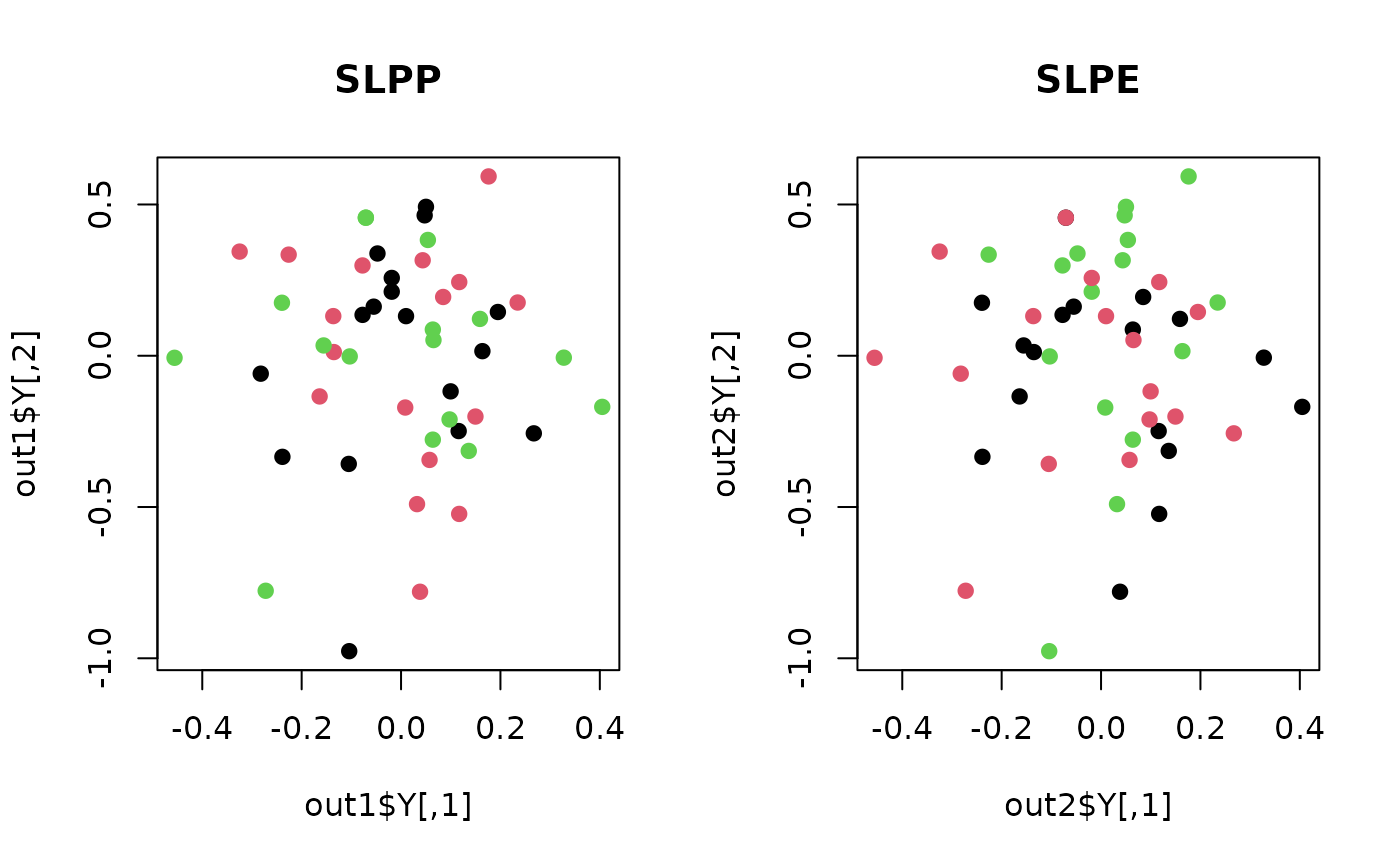Supervised Locality Pursuit Embedding (SLPE) is a supervised extension of LPE that uses class labels of data points in order to enhance discriminating power in its mapping into a low dimensional space.
do.slpe(
X,
label,
ndim = 2,
preprocess = c("center", "scale", "cscale", "decorrelate", "whiten")
)Arguments
- X
an \((n\times p)\) matrix or data frame whose rows are observations and columns represent independent variables.
- label
a length-\(n\) vector of data class labels.
- ndim
an integer-valued target dimension.
- preprocess
an additional option for preprocessing the data. Default is "center". See also
aux.preprocessfor more details.
Value
a named list containing
- Y
an \((n\times ndim)\) matrix whose rows are embedded observations.
- trfinfo
a list containing information for out-of-sample prediction.
- projection
a \((p\times ndim)\) whose columns are basis for projection.
References
Zheng Z, Yang J (2006). “Supervised Locality Pursuit Embedding for Pattern Classification.” Image and Vision Computing, 24(8), 819--826.
See also
Examples
## use iris data
data(iris)
set.seed(100)
subid = sample(1:150, 50)
X = as.matrix(iris[subid,1:4])
label = as.factor(iris[subid,5])
## compare SLPE with SLPP
out1 <- do.slpp(X, label)
out2 <- do.slpe(X, label)
## visualize
opar <- par(no.readonly=TRUE)
par(mfrow=c(1,2))
plot(out1$Y, pch=19, col=label, main="SLPP")
plot(out2$Y, pch=19, col=label, main="SLPE")
 par(opar)
par(opar)